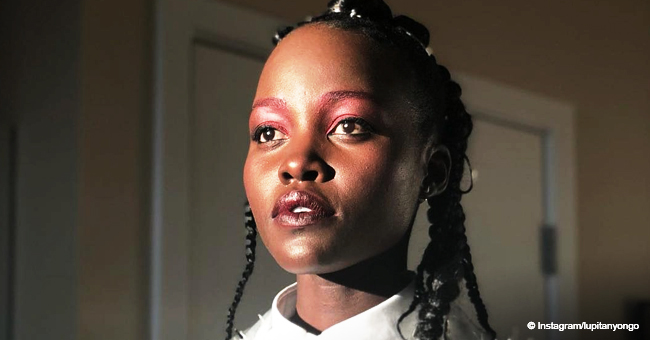
Lupita Nyong'o Catches Heat for Allegedly 'Demonizing Disability' with 'Us' Doppelgänger
Lupita Nyong’o has come under fire for allegedly “demonizing disability” with the voice inspiration for her doppelgänger character in the recent box-office hit, “Us.” The actress has since responded to the criticism and explained why she had to “amplify” a disability to portray her role.
In the days leading up to its premiere and even after the big event this past weekend, Jordan Peele’s horror film, “Us” has been getting rave reviews, but it turns out not everyone is happy, especially with the film’s leading lady, Nyong’o.
AMPLIFYING DISABILITY
Nyong’o, 36, portrays two characters in the horror film: Adelaide Wilson and her murderous doppelgänger, Red.
Before the film’s release, Nyong’o revealed to the New York Times that she got the inspiration for Red’s shaky voice after hearing Robert F. Kennedy Jr., who has spasmodic dysphonia, speak at an event.
Spasmodic dysphonia, according to the piece, is “a neurological disorder that causes involuntary spasms of the larynx” and Red’s voice is “a haunting amplification of the disorder.”
DISABILITY ORGANISATIONS COME FOR NYONG'O
While Nyong’o has been getting a lot of praise for her impressive performance of two complex characters, disability groups like the National Spasmodic Dysphonia Association (NSDA) and RespectAbility, are calling her out, reports IndieWire.
In a statement obtained by the outlet, the NDSA openly condemned the actress’s association of the disability with a disturbing circumstance.
“One of the toughest parts of having a disability is that people make assumptions based on the way you walk, talk or act, sometimes with little understanding of what is causing it. We understand that hearing the unique sound caused by symptoms of spasmodic dysphonia was the spark of inspiration for the voice of this character. What is difficult for us, and for the thousands of people living with spasmodic dysphonia, is this association to their voice with what might be considered haunting.”
Jennifer Laszlo Mizrahi, the president of RespectAbility, a nonprofit established to fight stigma and advance opportunities for people with disabilities, also said as much.
“Connecting disabilities to characters who are evil further marginalizes people with disabilities who also have significant abilities and want to contribute to their communities just like anyone else,” Mizrahi pointed out in a statement.
MISCONCEPTION ABOUT SPASMODIC DYSPHONIA
While speaking to Variety, the Oscar winner’s co-stars admitted that Red’s voice left them “shocked” and with “chills” and the actress described spasmodic dysphonia as a condition that is preceded by trauma.
NDSA executive director Kim Kuman, however, shot back at that, saying: “For so long, people were told that it’s psychological — and it’s not. It’s neurological.”
NYONGO'S SINCERE APOLOGY
During an appearance on “The View” Thursday, Nyong’o did her best to explain why she amplified the disorder to deliver her role and how it was not intended to hurt or demonize anyone.
“In my mind, I wasn’t interested in vilifying or demonizing the condition. I crafted Red with love and care. So as much as it is in a very genre-specific world, I really wanted to ground her in something that felt real. So for all of that, I say sorry to anyone that I may have offended.”
“In my process of exploring things for Red, I happened to hear Robert F. Kennedy Jr. speak at an event,” added Nyong’o. “His condition that he had was my catalyst to my creative process, and it became my in.”
The information in this article is not intended or implied to be a substitute for professional medical advice, diagnosis or treatment. All content, including text, and images contained on news.AmoMama.com, or available through news.AmoMama.com is for general information purposes only. news.AmoMama.com does not take responsibility for any action taken as a result of reading this article. Before undertaking any course of treatment please consult with your healthcare provider.
